Maksat was highly organised and always punctual. Alan laughed that it was because of his skilled military background. At 4.00 am, we were whisked off to the Ashgabat airport for our Turkmenistan Airlines flight to the eastern city of Mary. On our arrival Maksat asked us for our air tickets. We had no recollection of him giving them to us but when Maksat recalled that Alan had originally put them into his upper jacket pocket - and we found them - we realised that Maksat was more than efficient and we must have been getting tired. Alan, unlike me, never forgets or loses anything.
Whilst waiting for our flight, Maksat queued to buy a cup of coffee from the airport cafe. A dumpy, sour-faced waitress refused to serve him, saying she had served enough customers and was going home. Maksat shrugged his shoulders, grinned and said that she must be very tired. He didn't get his coffee either. We were starting to also realise that he was much more patient than we would have been.
Our forty minute flight to Mary cost us the whopping sum of AUS $12 each. Airfares are just another heavily government subsidised item. We were not complaining. The flight was pleasant, made quite amusing by the presence of the very friendly Malaysian tour group and their outrageously funny tour guide who did not stop making jokes for the entire flight. His tour group seemed to be thoroughly enjoying his humour but by the time we arrived in Mary we decided that a little of the guide went a very long way and thankfully set off with just Maksat and our driver Mischa.
When we first saw our itinerary to Mary and Merv, we were slightly amused that these names are such common and rather old fashioned names that were once very popular in Australia. However, we soon learnt that Mary is actually pronounced "Mah-ree" and Merv rather like "Mare-ve".
The oasis city of Mary lies in a large fertile cotton belt plain between the vast Karakum Desert of eastern Turkmenistan and the Afghanistan border. It is the third largest city in Turkmenistan and is a large industrial centre for natural gas and the cotton industry, the nation's two most import export industries. Other agricultural industries are flood irrigated wheat, cattle and sheep grazing. Maksat explained that the land is leased, and farmers lease or purchase farm machinery and procure agricultural goods through a local Peasants' Society.
Mary (which until 1937 was called Merv) is the capital of Mary Province and is a relatively new city dating back to the 1820's when the Tekke Turkmens erected a fortress at the present day site. It was subsequently taken over by the Russians in 1884 as a military administrative centre. The Russians strongly encouraged the cotton industry and Mary became one of the most important cotton growing centres in Turkmenistan. In the late 1960's the city gained increased wealth and prosperity when enormous natural gas reserves were found 20 kilometers west of the city.
Our first destination was Gonur, a world famous archaeological site some sixty kilometers and a tough two hours' drive north of Mary into the lonely flat Karakum Desert. We had especially requested this tour after reading about the significance of the archaeological findings and we also wanted the experience of travelling through the fearsome Black Sands of Turkmenistan. Owadan provided a new and robust four wheel drive sedan and we set off in high spirits for a fascinating trip through largely unmade tracks to the isolated "settlement" of Gonur Depe (Green Hill).
The sun scorched Karakum Desert was interesting. It is not entirely devoid of vegetation and low lying scrubby growth and grassy tussocks somehow cling to precarious life in this extraordinarily hot, dry vast expanse of desert. We stopped several times to look at the surrounds. It is not devoid of animal life either, with myriads of hare tracks, lizard trails and a startling number of amazingly large black beetles. Fortunately we did not see any of the large monitor lizards - The Varan - or any cobras for which the desert is famous. Flat dun country dotted with hair stubble vegetation gave way to sweeping curved buff sand dunes. Our four wheel drive lurched and swung along myriads of intertwining tyre tracks. We wondered how Mischa did not get lost. It seemed you could travel along any of these routes and still get to the same destination. Well, I probably couldn't ....
We were off road for some time before we climbed our last hill. We were in the middle of nowhere. A couple of lonely tents, a yurt and a few windowless mud brick dwellings greeted us. Grids of catalogued ancient pottery stood alone and unprotected in front of the tents. Shards of ancient broken pottery crushed beneath our feet. In the distance were sand blurred excavation sites and numerous sand covered dunes. This was Gonur, the site of what is believed to have been one of the greatest civilisations of the ancient world and the capital of the state of Margiana.
Turkmenistan appeared to be full of contradictions. For two days we had seen only the very new city of Ashgabat; now we were gazing at the site of one of the oldest recorded settlements in the world with excavated ruins and pottery dating back some 7,000 years.
It is believed that the first agricultural settlements appeared in the delta, known as Margush or the Margiana Oasis of the Murgab River as far back as 7,000 BC. A moderate climate, abundance of water and a fertile plain created conditions favourable for substantial settlements. Recent excavations reveal that the settlement of Gonur was most likely one of the largest and most complex of these great ancient civilisations, rivalling the great cities of Mesopotamia, Egypt, India and China. It is also thought to be the birthplace of the fire worshipping Zoroastrian religion, and at some point in time the home of the religion's founder Zoroaster.
The site was first discovered by the Russian-Greek archaeologist Viktor Sarianidi in 1972 and excavations continue to uncover new findings. Sarianidi believes that Gonur was slowly abandoned during the Bronze Age due to the Murgab River changing course, starving the settlement of all water. Excavations reveal a large palace and city walls, and four fire temples. From remnants of poppy and hemp, there is also evidence of an ancient cult based around drug preparation. According to the Zoroastrian holy book The Avesta, the drink called the Haoma represents a deity that can cure all sufferings.
We wandered transfixed around the archaeologists' camp site gazing in awe at the ancient pots, most of which were in splendid condition. Husband and wife caretakers looked after the site and the woman also cooked for the archaeologists. We admired the tenacity of these people living in such a remote and hostile environment. A huge guard dog loped over to check us out and thankfully decided we were no threat. Whilst making a fuss of this big fellow, we looked across at his food bowl and were astonished to see that it too was an ancient piece of Gonur pottery!
We heard the roar of a motor vehicle long before we could see it through the dusty dunes. A large four-wheel drive lurched into the camp site and helped out by several of the archaeologists was none other than the famous Mr Viktor Sarianidi. We were delighted. Mr Sarianidi, now in his late eighties was looking quite fragile and unsteady. However, he sat with us outside the tents and generously spent considerable time explaining the excavation site. His passion was infectious and we were immensely appreciative of the time he spent with us. Our surprise meeting certainly made our visit to Gonur one of the highlights of our travels.
We spent some time being escorted around the ruins by another of the archaeologists. While you really had to have a great imagination to take in the detail of the excavated ruins, you could see that it was once a rectangular fortress with powerful defensive walls, semi circular bastions and adobe buildings. The complex also reveals the remains of palaces, temples with fire altars and royal tombs. One tomb we examined showed a complete, sad skeleton of a small foal, obviously placed in the tomb for sacrificial reasons. The site was simply fascinating and truly worth the visit.
High buff mounds seem to appear from nowhere along the flat desert drive from Gonur to the city of Merv. Maksat explained that they are most probably the remains of ancient settlements that have over time been covered with the sands of the Karakum Desert, and have not yet been excavated. We were blown away. It seemed impossible that probable ancient sites could still exist without being excavated, or even worse being vandalised. To this day, it still amazes us. We decided the Turkmen people must be an amazingly honorable race.
Our afternoon tour took us to the ancient city of Merv, a 45 minute drive from Mary. The oasis of Merv is situated in the Karakum Desert at the crossing of the Amu Darya River and the main route to Bukhara in Uzbekistan. The earliest Bronze Age centres in Merv date from 2,500 BC. The historic urban centre developed around 500 BC. The oasis was also part of Alexander the Great's empire and as mentioned Merv was once known as the famous city of Alexandria. It was later rebuilt by the Seleucids and named Margiana Antiochia. It was subsequently occupied by the Parthians and Sassanids.
Sadly, the highly sophisticated Merv was subject to more bloody battles. Lonely Planet Guide states: "Before the sons of Genghiz Khan laid waste to the great city and slaughtered its population, Merv had been a melting pot of religious faiths and ethnic groups. Its buildings of fired brick towered over the green oasis, and included palaces, mosques, caravanserais and thousands of private homes"
During the late 7th century the Arabs introduced Islam to Turkmenistan and Merv became a major centre of Islam and a key staging post along the Silk Road. It is believed to have once rivalled in religious importance the great cities of Damascus, Bagdad and Cairo.
Today there is little left of what once was a an immense city comprising palaces, mosques, caravanserais and thousands of private dwellings. And there is little indication apart from the massive ruins, that the now arid region was once a fertile and green flourishing oasis settlement and home to the five walled cities of Erk Kala, Gyaur Kala, Sultan Kala, Abdullah Khan Kala and Bairam Ali Khan Kala.
The earliest remains of the five cities of Merv is the ancient Archaemenid city of Erk Kala (meaning citadel castle) which is thought to date back to the 6th century BC, and once the ancient centre of Merv. It was a long and very steep climb to the top of the 30 meter doughnut shaped mound to look at the remains of the once vast settlement, home to the religions of the Zoroastrians, Nestorian Christians, Jews and Buddhists. There was not a lot to see physically other than the ancient walls and desert but you could easily identify another fortress, the Gyaur Kala, constructed in the 3rd century BC by the Sassanians and an expansion of the original city of Erk Kala. Gyaur Kala became an important suburb of the city, housing much of the industrial and craftsman workshops for the area. The Gyaur Kala was occupied for over a thousand years under the consecutive reigns of Parthians, Sassanians and Umayyads, and constitutes the longest living of the Merv settlements.
From the Erk Kala mound, it was also possible to sight a distinct mound marking the site of a Buddhist stupa and monastery, which was apparently still functioning during the Islamic era.
Our next visit was the ancient ruins of Minor and Major Gyz Kala, their fantastic clay corrugated walls resembling a giant mass of vertically placed Italian savoiradi (sponge) biscuits. These most impressive structures were constructed by the Sassanians in the 7th century and were used as fortresses. A lot of the site had crumbled into ruins but what was remaining was hauntingly beautiful. Hundreds of wild camels grazed amongst the ruins. We wondered about the damage they must be doing to the fragile remains of Merv's ancient sites. Maksat told us they were quite a problem. However, in the long shadows of a desert afternoon we had to admit they added a certain atmosphere to the brooding silent remains of this once great settlement. On our walk around the ruins we were approached by a group of traditionally dressed Turkmen women who asked Maksat if we could take their photos. They were beautifully dressed in brightly coloured long gowns and like all the Turkmen people we had met, were extremely friendly.
Around the time of the Islamic Revolution a new city was constructed to the west of Gyaur Kala, on the opposite side of the Murgab River. The new city was called Sultan Kala and provided a solution to the growing water problems within Gyaur Kala and provided an opportunity to establish a new city designed around a canal running through its centre. Within Sultan Kala, an intricate city wide plumbing system was built with pipes pulling water from the canal to surrounding reservoirs. Much of old Gyaur Kala remained as suburb to the new city, largely as an industrial areas with ceramic and metal workshops.
In the mid afternoon we stopped at the lonely Mausoleum of the Sultan Sanjar located in what was once the centre of Sultan Kala. Apparently, Sanjar died of "a broken heart" when after escaping captivity in Khiva, he returned home to find that Genghis Khan's soldiers had ravaged his beloved city of Merv. The mud brick mausoleum represents the architectural peak of the destroyed city and is noted as a rare example of Seljuk commemorative architecture. Standing on its own in the vast desert, it was hard to imagine that this old mausoleum was once part of a thriving city. It consists of an enormous brick cube-shaped building, approximately 27 meters square and crowned by a dome nearly 18 meters in diameter. Originally the dome was constructed with magnificent turquoise tiles and said to be visible from "one day's ride away". It must have been simply wonderful. Recent renovations have been carried out with the aid of Turkish funding.
Our last stop in Merv was at the Mausoleums of Two Ashkab (companions of the prophet), one of the most important pilgrimage sites in Turkmenistan. Two mausoleums were built for the Islamic Ashkab or Companions of the Prophet, Al-Hakim ibn Amr al-Jafari and Buraida ibn al-Huseib al-Islami and stand in front of reconstructed portals that honour the prophets. A lot of structural work was underway when we visited and unfortunately the mausoleums were covered with scaffolding.
In the afternoon we had a brief visit to the Yusuf Hamadani Mosque. A rather sombre and forbidding site, the complex is built around the grave of the dervish Abu Yaqub ibn Ayub who came from the city of Hamadan, Iran (see entry "Tehran to Hamadan - So Dizi My Head is Spinning" for details on the city of Hamadan) in the first half of the 12th century. The present mausoleum is a modern re-building of a 19th century construction. The mausoleum and mosque was not particularly inspiring, and as Alan was feeling ill, we decided to end our tour for the day.
In the tree shaded courtyard of the Cafe Merjen, Mary we enjoyed a very late lunch of samsas (delicious meat filled pastries) and a cold beer. Maksat looked longingly at our beer but said he would not drink while he was working. We were all too aware that it was our last day before we travelled into Iran where we would be without alcohol for our 15 day trip. We thoroughly enjoyed our beer and our day in eastern Turkmenistan.
For some reason we could not stay at our scheduled Margush Hotel in Mary. Instead we were taken to another hotel in town. The rooms were small, dark and depressing. It smelt horrible, A couple sitting in the lounge looked at us expectantly and smiled - it seemed that they were the only guests and we felt sorry for them. We knew that the only other suitable hotel was some 30 kms out of town but there was no way we were going to stay in this prison-like accommodation. Maksat and Mischa looked disappointed but finally drove us out to the remotely located Dayanche Hotel.
The newly built Dayanche Hotel looked quite out of place plonked on a large plot in the middle of the Sakachaga District, an urban satellite township of Mary city. But despite its somewhat odd appearance, we were more than happy with our large, well appointed suite.
Our first mission was to find some beer. After all - it did feel like the Last Supper for Alcohol. An English tourist chatted with us and told us there was a shop "just down the road" where we could buy provisions. We walked for what seemed like forever before resigning ourselves to ask some of the locals. It was a balmy evening and the wide tree lined streets were filled with children playing ball games and neighbours chatting idly. The atmosphere was warm and friendly and reminded us strongly of a late afternoon walk in the city of Khiva in western Uzbekistan on a trip two years before when we became part of a children's' birthday party.
We eventually came across some young men gathered around what appeared to be their new car. Despite our lack of local language they understood the term "department store" and immediately offered to drive us there. We were very grateful for their generosity - and in hindsight perhaps we should have taken the offer - as it was at least another twenty minute walk, The department store was bizarre. All we could find was heaps of clothing materials and furniture. But as usual we were saved by a helpful local. A lovely and friendly woman worked out what we needed and guided us to the food section. To our surprise, draft beer was served at the counter into large bottles. We were delighted and even found some nuts and snack foods before stumbling back on the long trek to our hotel.
We later found out that the local beer shop was actually right next door to our hotel. You may now appreciate the extent of my sense of direction disability.
We had an early night. The next day we knew we had a long drive to the Saraghs border where we would cross into Iran and then onto the holy city of Mashad.
Ancient Gonur - Good Morning Mr Sarianidi!
Sunday, April 17, 2011
 Mary, Turkmenistan
Mary, Turkmenistan
Other Entries
-
1Introduction
Apr 107 days prior Crowdy Head, Australiaphoto_camera0videocam 0comment 0
Crowdy Head, Australiaphoto_camera0videocam 0comment 0 -
2HISTORICAL TIMELINE
Apr 116 days prior Crowdy Head, Australiaphoto_camera1videocam 0comment 0
Crowdy Head, Australiaphoto_camera1videocam 0comment 0 -
3Bon Voyage - or the Last Supper?
Apr 116 days prior Crowdy Head, Australiaphoto_camera1videocam 0comment 0
Crowdy Head, Australiaphoto_camera1videocam 0comment 0 -
4Pssst - Most People in Western China are Muslim...
Apr 116 days prior Sydney, Australiaphoto_camera3videocam 0comment 0
Sydney, Australiaphoto_camera3videocam 0comment 0 -
5Just a Fleeting Stay in Shanghai
Apr 125 days prior Shanghai, Chinaphoto_camera2videocam 0comment 0
Shanghai, Chinaphoto_camera2videocam 0comment 0 -
6Back
Apr 134 days prior Urumqi, Chinaphoto_camera4videocam 0comment 0
Urumqi, Chinaphoto_camera4videocam 0comment 0 -
7Everything is Grand and White in Ashgabat
Apr 143 days prior Ashgabat, Turkmenistanphoto_camera18videocam 0comment 0
Ashgabat, Turkmenistanphoto_camera18videocam 0comment 0 -
8Ancient Gonur - Good Morning Mr Sarianidi!
Apr 17 Mary, Turkmenistanphoto_camera12videocam 0comment 0
Mary, Turkmenistanphoto_camera12videocam 0comment 0 -
9Stumbling Over the Border and Into Iran
Apr 181 day later Mashad, Iranphoto_camera2videocam 0comment 0
Mashad, Iranphoto_camera2videocam 0comment 0 -
10Mashad - Our Confronting Introduction to Iran
Apr 181 day later Mashad, Iranphoto_camera9videocam 0comment 0
Mashad, Iranphoto_camera9videocam 0comment 0 -
11Around Mashad - Mausoleums of Two Literary Giants
Apr 192 days later Tehran, Iranphoto_camera7videocam 0comment 0
Tehran, Iranphoto_camera7videocam 0comment 0 -
12Tehran to Hamadan - So Dizi My Head is Spinning...
Apr 203 days later Hamadan, Iranphoto_camera8videocam 0comment 0
Hamadan, Iranphoto_camera8videocam 0comment 0 -
13To Khorramabad: Connecting With the Archaemenids
Apr 214 days later Khorramabad, Iranphoto_camera11videocam 0comment 0
Khorramabad, Iranphoto_camera11videocam 0comment 0 -
14"If You Were Israeli - I Cut Your Throat!"
Apr 225 days later Ahvaz, Iranphoto_camera7videocam 0comment 0
Ahvaz, Iranphoto_camera7videocam 0comment 0 -
15Iran-Iraq War Martyrs: Flying the Fallen
Apr 236 days later Shiraz, Iranphoto_camera8videocam 0comment 0
Shiraz, Iranphoto_camera8videocam 0comment 0 -
16Perceptions of Persepolis: Grandeur of the Ruins
Apr 247 days later Shiraz, Iranphoto_camera8videocam 0comment 0
Shiraz, Iranphoto_camera8videocam 0comment 0 -
17Photo Gallery of Persepolis and Naqsh-E Rostam
Apr 247 days later Shiraz, Iranphoto_camera16videocam 0comment 0
Shiraz, Iranphoto_camera16videocam 0comment 0 -
18Today: The First Day of the Remainder of Your Life
Apr 258 days later Kerman, Iranphoto_camera16videocam 0comment 0
Kerman, Iranphoto_camera16videocam 0comment 0 -
19Yazd - Such a Lovely Place, Such a Lovely Place...
Apr 2710 days later Yazd, Iranphoto_camera14videocam 0comment 0
Yazd, Iranphoto_camera14videocam 0comment 0 -
20Toward Esfahan - "The Jewel of Ancient Persia"
Apr 2811 days later Esfahan, Iranphoto_camera34videocam 0comment 0
Esfahan, Iranphoto_camera34videocam 0comment 0 -
21A Gorgeous Carpet, Jolfa and Fascinating Abyaneh
Apr 3013 days later Abyaneh, Iranphoto_camera9videocam 0comment 0
Abyaneh, Iranphoto_camera9videocam 0comment 0 -
22Photo Gallery of Abyaneh Village
Apr 3013 days later Abyaneh, Iranphoto_camera13videocam 0comment 0
Abyaneh, Iranphoto_camera13videocam 0comment 0 -
23Destination Tehran - Reflections on our Travels
May 0114 days later Tehran, Iranphoto_camera13videocam 0comment 0
Tehran, Iranphoto_camera13videocam 0comment 0 -
24Osama bin Laden Dead - Our Travel Plans in Chaos
May 0215 days later Dubai, United Arab Emirates, United Arab Emiratesphoto_camera11videocam 0comment 0
Dubai, United Arab Emirates, United Arab Emiratesphoto_camera11videocam 0comment 0 -
25For Better or For Worse - We Head off to Islamabad
May 0316 days later Islamabad, Pakistanphoto_camera4videocam 0comment 0
Islamabad, Pakistanphoto_camera4videocam 0comment 0 -
26Eclectic Chitral - North West Frontier Province
May 0417 days later Chitral, Pakistanphoto_camera14videocam 0comment 0
Chitral, Pakistanphoto_camera14videocam 0comment 0

 Mary, Turkmenistan
Mary, Turkmenistan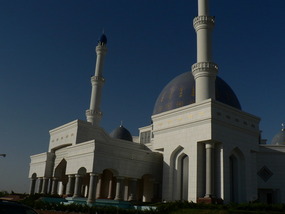
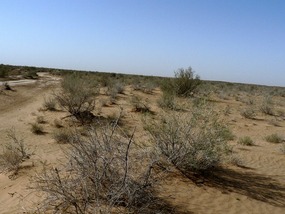
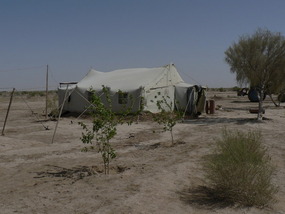
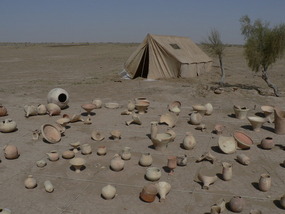
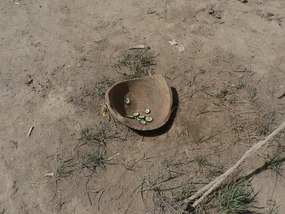

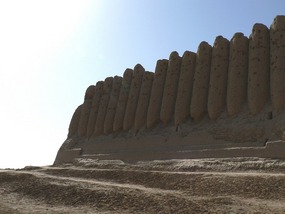

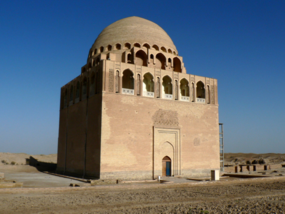
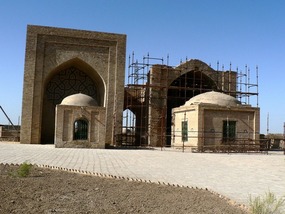
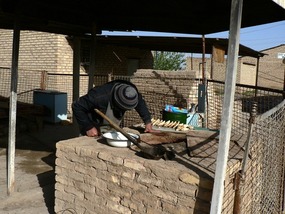







2025-05-22